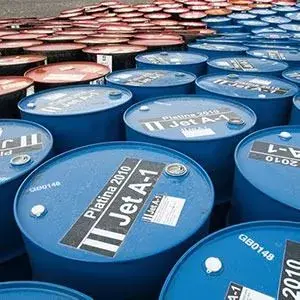


JET A 1 AVIATION KEROSENE
We are your component partner for jet fuel
Jet A-1, also known as kerosene, is a fuel for aircraft with turbines. This fuel has strict requirements with regard to cold behavior, combustion properties, stability and purity.

ORIGIN
Non-Russian/Non-Sanctioned OPEC Member countries, or EU

PRODUCT DESCRIPTION
Jet A-1 is a high-quality, kerosene-type jet fuel used in most commercial and military turbine engines worldwide, with key specifications including a flash point above 38°C and a freezing point of -47°C. It is characterized by its suitability for lower-temperature environments, its compatibility with most jet aircraft, and its compliance with stringent international standards like DEF STAN 91-91 and ASTM D1655

KEY CHARACTERISTICS
-
Flash Point: A minimum of 38°C (100°F).
-
Freezing Point: A maximum of -47°C (-52.6°F).
-
Density: Around 804 kg/m³ at 15°C.
-
Type: Kerosene-type fuel.
-

Specifications and Standards
Jet A-1 is defined by several key international and national standards, including:
-
DEF STAN 91-091: A British Ministry of Defence standard for jet fuel.
-
NATO Code F-35: A specification for kerosene-type jet fuel.
-
ASTM D1655: An American standard specification for aviation turbine fuels.
-
-
Jet A-1's lower freezing point makes it the preferred fuel for international long-haul flights, especially over polar routes.
-
Aircraft Compatibility:
-
It is suitable for most civilian and military jet turbine engines, as well as some compression-ignition piston engines.
-
Additives:
-
Unlike Jet A, which is mostly found in the U.S., Jet A-1 typically contains a static dissipator additive.
-
-
Similar to Jet A-1 but is primarily used in the U.S. and has a slightly higher freezing point of -40°C.
-
Avgas:
-
A different fuel, similar to automotive gasoline, used mainly in propeller aircraft.
-
Household Kerosene:
-
Should never be substituted for Jet A-1, as it lacks the additives and specifications required for turbine engines and can damage the engine.
-
